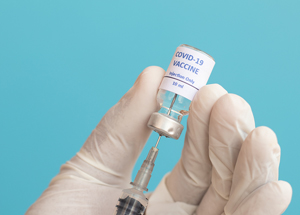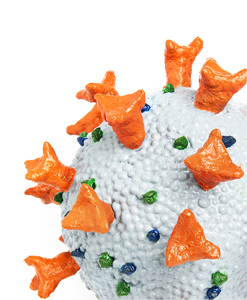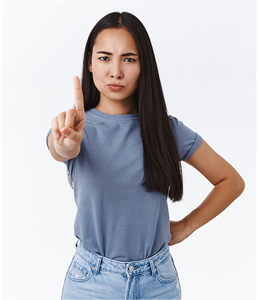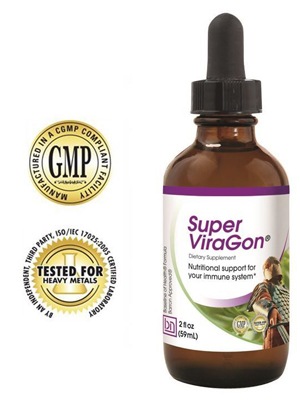The COVID Vaccines and What They Mean
I have to admit, I am not very enthusiastic about writing this newsletter. Opinions have become so firm that very few people look for new information. Most people now just want to see things that confirm what they already believe and don't want anything to do with anything that contradicts that belief. For example, most people associated with the antivaxxer movement likely stopped reading this newsletter as soon as they saw the word vaccine in the title.
Even so, over the past few months several hundred people have asked when I would publish a new newsletter informing them about the virus. And as the old marketing adage goes, for anyone who writes, there are a hundred who feel the same way but who haven't bothered to write. If that's true, out of a quarter of a million people who read these newsletters worldwide, there are roughly 20 to 40,000 who are actually still looking for rational, updated information about the coronavirus. And so I have gathered my reserves of enthusiasm for these readers in order to write this newsletter.
Covid-19 vaccinations

On November 9, Pfizer Pharmaceutical and associate BioNTech released early study results showing their vaccine candidate prevented more than 90% of infections with the COVID-19 virus. (On November 18, they revised this to 95% effective.) If all goes as expected, FDA approval will come around the time this newsletter is published in early December, with an emergency distribution before the end of the month. However, the mass distribution is not expected to happen until some time later in 2021. In a statement, Pfizer said it could deliver up to 50 million doses of its experimental coronavirus vaccine by 2020. That's not quite as much as it sounds, as two doses are required for each person. Up to 1.3 billion doses will be available by 2021, but that would be for the whole world. So you're still only talking about half a billion out of 7.6 billion people.
Exactly a week later, on November 16, Moderna announced that its COVID-19 vaccine had been tested to be 94.5% effective. In particular, there were 95 cases of infection in patients in the company's 30,000-patient study. Only five of them occurred in patients who received the Moderna vaccine and those five had only mild symptoms. In fact, it could be said that the vaccine had a 100% success rate.
To be clear, we don't have any data on groups that were not included in the study, including children, pregnant women, severely immunocompromised people, and the very elderly. We also don't know whether people who were previously sick with COVID-19 are protected from re-infection. We can probably conclude that all of these groups will respond positively to the vaccines once they are released in the real world, but the reality is unclear for now. Let's look at what we know for sure.

Most vaccines (e.g. the annual flu vaccine and most of the other COVID vaccines in the pipeline) are based on a whole neutralized virus (or multiple viruses, as is the case with the flu vaccine). However, both vaccine candidates Moderna and Pfizer use a new approach to unlock the body's adaptive immune defenses. (For a full description of the difference between innate and adaptive immunity, see How a Virus Works.) This approach uses messenger RNA, or mRNA, to turn a patient's B cells into factories that make antibodies against a particular one Defend Immunity Coronavirus Protein. It is vaccine technology so new that mRNA vaccines have never been approved by the Food and Drug Administration before. The difference between the two vaccines is that Moderna's vaccine codes for the entire spike (or S) protein on the surface of a virus and the responses are called S-specific, while the Pfizer vaccine is more precise and only this is coded for by part of the protein known as the binding domain that is located on the tip. By the way, the tip is what a virus uses to attach to one of your cells, inject its DNA into your cell, and turn that cell into a factory that exponentially replicates the virus and spreads it around your body.
Both proteins can trigger an immune response as if there were a real coronavirus infection. One benefit of this approach is that the vaccine cannot accidentally infect someone or make someone sick, as the vaccine is built around just one viral protein or protein fragment that is in the tip, rather than the entire COVID virus. 19th A second theoretical benefit is that the more proteins you use, the more likely it is that you will have a negative side effect. With just one protein, the chance of a negative reaction is less – and less likely if one occurs. Regardless of whether it is one or more proteins, as long as it contains the correct protein or protein fragment, your body will build an antibody defense against it. If someone who has been vaccinated is later exposed to the coronavirus, their body's adaptive immune system should be able to fight it off more easily and therefore be more likely to avoid serious illness.
In addition to programming your body's B cells to build specific antibody defense against the virus, you want your immunization response to train your T cells to recognize and attack your own cells in your body that may have infected the virus and also get rid of them before they can spread the virus. In this regard, both the Pfizer and Moderna vaccines appear to be doing the same, although the Pfizer vaccine appears to have a slightly stronger response at first.

On September 30, Pfizer published a study in Nature that confirmed that two doses (the required dosage for their vaccine) produced robust CD4 + and CD8 + T-cell responses and strong antibody responses, with RBD-binding IgG levels being evident those in the serum of individuals who were naturally infected with COVID-19 and subsequently recovered from it. In other words, the Pfizer vaccine appears to produce a stronger response than those who gain immunity naturally.
In addition, these cellular responses were directed against the COVID-19 receptor binding domain (the tip), which implies a very precise response against the antigen that the Pfizer vaccine encodes.
On November 12, Moderna published a study in the New England Journal of Medicine (originally published online July 14, 2020) that found that their vaccine elicited an immune response in all participants and that it did not identify any trial-limiting safety concerns. In particular, the structurally defined spike antigen in their vaccine was found to induce robust antibody-neutralizing activity and that gene-based delivery promotes Th1 cytokine biased responses, including CD8 T cells, which protect against virus replication in lung and nasal cells without this can be proven immunopathology. It also induces Th1 biased CD4 T cell responses in humans.
A third advantage of the mRNA approach is that vaccines can be made from mRNA not only more precisely, but also much faster than older vaccines. This explains why these are the first two vaccines to be made available. However, the main disadvantage is that this type of vaccine is far less stable. This means that they can decompose very quickly at normal temperatures. Three steps are required to reverse this effect.
- The first step is to modify the “building blocks” of the RNA vaccine so that it is more stable and does not break down as much.
- The next step is to coat the building blocks to protect them from enzymes that may break them down.
- The most important step, however, is to freeze the vaccines in order to stop all enzyme activity. In that regard, the Pfizer vaccine requires much, much colder storage temperatures than the Moderna vaccine – so cold that special refrigeration units must be built to store it. In the developed world, this is difficult enough. In the Third World, that's just not possible. These countries will depend on the more traditional vaccines like AztraZenecas or possibly the Russian vaccine.
And when AstraZeneca spoke of AstraZeneca on November 23, it was announcing the results of preliminary trials of its vaccine. At the full dose, it was found to be 62% effective. What is more interesting, however, is that if a half dose was accidentally used in a number of test subjects, it was found to be 90% effective. Like the Moderna and Pfizer vaccines, AstraZeneca also requires two doses, but unlike the other vaccines, AstraZeneca's vaccine does not require special refrigeration, which, as mentioned earlier, makes it a much more viable alternative for third world countries where special Storage temperatures are likely to be problematic. In addition, the AstraZeneca vaccine is far cheaper to manufacture.
So everything is fine; everything moves forward; Vaccines are here; we can see the light at the end of the tunnel; Yes?
Not necessarily.
security

While these vaccines look relatively safe, “relative” is not the same as “perfect”. As I said last February in relation to the COVID-19 virus itself, a small percentage applied to large numbers (all in the United States) would still mean large numbers of people would die. After 285,000 deaths and counts, that prediction seems pretty forward-looking.
Let me show you how this works using the flu vaccine as a real-life example.
Influenza vaccine deaths and injuries
The two most common causes of death with a flu shot are anaphylaxis and Guillain-Barre syndrome (GBS). Anaphylaxis is a severe, potentially life-threatening allergic reaction to an antigen that can kill you by either choking you or causing you to go into cardiovascular shock. Guillain-Barre syndrome is a central nervous system response to bacterial or viral infections, most commonly food poisoning. It causes mostly temporary paralysis and can lead to hospitalization for up to six weeks. Most cases of mortality from GBS are due to severe autonomic instability or the complications of prolonged intubation and paralysis. The leading cause of death in the elderly with GBS is arrhythmia.
The CDC reports 1.31 cases of anaphylaxis per million flu shots, and one or two similar people in a million develop GBS. (Approximately 161 million Americans get the flu shot each year.) So we're talking about 210 cases of anaphylaxis per year in the United States, and since anaphylaxis has a death rate between 0.25% and 0.33%, we're talking about one death all two or three years. With GBS, a small number of people are permanently impaired, and approximately 3 to 5% die.
In other words, between 4 and 15 people die each year as a result of the flu vaccination, with 300 to 400 people seriously injured. This contrasts with the fact that around 55,000 people die from the flu itself in the US each year, with the majority of those deaths occurring in the unvaccinated. Well, to be fair, while flu vaccination complications are rare given the number of flu shots given each year, rarity is probably not an extenuating factor on your mind when you or someone you love injures or dies. Incidentally, the total compensation paid out during the lifetime of the government's National Vaccine Injury Compensation Program (NVICP) is approximately $ 3.6 billion. These are many serious side effects. And as I mentioned earlier, the flu vaccine consistently tops the list of NVICP claims and payouts for injuries and deaths due to the side effects of vaccination.
The bottom line is that the flu vaccine is neither as harmful or ineffective as antivaxxers claim, nor as safe or effective as the medical community puts it. Both sides lied to you. Unfortunately, this makes a rational discussion about vaccines impossible.
What do these numbers mean?

We make these types of compromises all the time. For example, there are approximately 39,000 deaths from automobile accidents in the United States each year – and many times that number of injuries – some of them permanent. Yet we accept these deaths and injuries in exchange for the convenience of being able to drive around wherever and whenever we want. We also accept the fact that hundreds of thousands of people will die of heart disease every year because companies can make and sell fast food and junk food just because people want to. This, too, is a compromise that we are ready to make.
The question is, are we willing to give a few hundred people who may be long-term injured and about a dozen people who die from COVID-19 vaccines each year (assuming the numbers are similar to the flu vaccine) in return for that To accept prevention? 500,000 deaths and "sometime" return to normal life? Currently around 40% of the country seems to think this is a bad compromise.
In any case, the safety of these vaccines is currently an open question until the vaccine is used in much higher amounts and we determine if there are any long-term complications.
What are the side effects of the COVID vaccinations?
But are the side effects associated with the COVID vaccines similar to those of the flu vaccine? In truth, they are likely to be less for two reasons. First, the vaccine contains fewer antigenic proteins because you are only defending against one virus versus multiple viruses in each flu vaccine. And having fewer antigen proteins is likely to mean fewer harmful side effects. And in theory, mRNA vaccines, while never before used in humans, are likely to have fewer complications than traditional vaccines because they contain the fewest protein of all – and they are very targeted. With adequate vaccinations, a small number of people are likely to have far more harmful side effects, and a small percentage of them could even die. As with all vaccines, there are compromises.
But let's go into detail and see what the studies have shown us about the known side effects of COVID vaccines. All three vaccines we've talked about so far require two doses. Others in the pipeline only need one dose; however, their effectiveness has not been proven. Since the first three vaccines require two doses each, let's talk about the side effects of these vaccines.
The vaccination process literally involves teaching your immune system to recognize a virus and then to defend itself quickly and aggressively against it when it actually detects that virus. In the first dose, your immune system learns to recognize the virus. This is sometimes referred to as "priming" the immune response, and this process takes about two or three weeks. In the second dose, your immune system does most of the work in building your long-term defenses against the virus and dramatically boosts this first immune response. This boosting process also takes about two weeks.
The actual injection will feel no different than any other injection you may have had. This is basically just a small pinch in the side of your arm. From then on, however, it looks a little different. After the dose of primer, you will likely feel pain and slight swelling at the injection site. And according to test subjects, you probably also feel a certain stiffness in your upper arm, which becomes more intense as the day progresses. It's not something that is not easy to handle and that is all but gone the next morning.
On the second dose, your immune system builds most of its defenses, which means the side effects get stronger. The subjects reported that by the end of the day of the second injection they had developed a mild fever, fatigue, and even slight chills. But the next morning all side effects were gone.
Note: Other vaccines in the pipeline only require one dose. It is likely that one dose of these vaccines will cause side effects similar to those of the second vaccination with two vaccines. If the vaccine works, these are the side effects that will show your immune system is responding. If you don't notice at least some of the side effects, your immune system is likely not optimally prepared to deal with the virus if you are exposed to the virus in the future. It can still be enough – just not optimal.
Once you understand what is going on in your body, it makes sense to do so. No, you won't get a mild case of COVID. In fact, this is impossible with mRNA vaccines because the vaccine does not contain an actual virus and is extremely unlikely even with more typical vaccines against inactivated viruses, unless there is a major gaffe in manufacturing. Feeling “under the weather” simply means that your immune system is responding to the protein antigens in the vaccine. Take a fever, for example. A fever that occurs with the common cold or flu is not caused by the virus itself. It is caused by your immune system as part of its defense against the virus. Raising your body temperature does three things.

- First, higher body temperatures are more uncomfortable for most pathogens than we are.
- Second, an increase in body temperature speeds up your metabolism, including your immune system. In other words, as you increase your body temperature, your immune system gets faster. In particular, immune cells that grow in a feverish environment produce a series of molecules called heat shock proteins. One of these proteins, known as Hsp90, quickly sets off a cascade of events that ultimately direct the immune cells quickly to the site of infection.
- Swelling (unfortunately accompanied by body pain) also brings more immune cells to the site of the inflammation.
Anyway, you have the idea. This type of response to the second dose simply shows that your body is reacting as it should, that the vaccine is working, and that you are building a long-term defense against the virus.
As for the long-term side effects of the COVID vaccines, we'll have to wait and see. However, when it comes to safety, the bottom line is that getting your immunity through vaccinations is probably much less risky than maintaining your immunity from natural infections (285,000 dead and counting, not to mention several million long-distance drivers). Anyone who likes to play will understand where the better odds are here.
longevity
A big question that none of the vaccine studies answered is: How long does the vaccine protection last? We know that naturally acquired immunity seems to decrease with time after 2-3 months. A vaccine like the measles vaccine that lasts a lifetime is one thing, but a vaccine that requires two separate vaccinations and only protects 6-12 months or less is a different story. It may still be useful, but it can no longer be considered a game changer. To be fair, most scientists speculate that the COVID vaccines should maintain their effectiveness for about a year. If so, then you are talking about annual vaccinations for the foreseeable future.
On the other hand, there were at least 25 documented cases of reinfection worldwide since the beginning of the pandemic by August. The first known case of reinfection was a 5-year-old South Korean woman on April 5th. And the first confirmed case of a person who died of COVID-19 reinfection was an 89-year-old Dutch woman being treated for Waldenström's macroglobulinemia, a rare type of white blood cell cancer that is treatable but incurable. The results were published in Oxford University Press on October 9th.
The researchers said the woman came to the emergency room earlier this year while she was suffering from a fever and a severe cough. She tested positive for coronavirus and stayed in the hospital for 5 days, after which time her symptoms completely resolved except for persistent fatigue. Almost two months later, just two days after starting new chemotherapy, she developed a fever, cough, and shortness of breath. When she was admitted to the hospital, her oxygen saturation was 90 percent with a breathing rate of 40 breaths per minute. She tested positive for coronavirus again, while the antibody tests on days 4 and 6 were negative. “On day 8, the patient's condition worsened. She died two weeks later. "
However, the truth is that it is unclear how many cases of reinfection have actually occurred and how often they can occur in people who do not even know they are infected – either initially or after re-infection. However, the important point to understand here is that respiratory infections like COVID-19 don't offer lifelong immunity like measles infection – and neither do vaccines.
Vaccines work better when people actually take them

The big question behind the COVID vaccines is: How many people will they take? Currently, around 50% of respondents say they are not ready to receive the vaccine. The other day I heard Chris Cuomo say he wasn't worried about people who refuse to get vaccinated. He was sure that the reason people hesitated was because the vaccines were being made so quickly that people doubted their safety and that they would line up to get the vaccine as soon as the scientific community got them calmed down. He's obviously looking at a different world than me. When I look at America, I see that only about 10% of the population falls under his analysis. When I look at the numbers, I see 40% as hardcore naysayers.
There are three main reasons the hardcore naysayers offer not to get vaccinated depending on what video they saw that kept them away.
- There are the longstanding antivaxxers. It's not the COVID vaccine that they specifically object to. They are all vaccines. For the hardcore antivaxxers, vaccination doesn't work at all and is far more dangerous and deadly than the numbers above. And no confirmation from the medical community will convince them otherwise when it comes to the COVID vaccines. To take the COVID vaccine, everything they believe in would have to be refuted. It's not going to happen.
- Then there are those who are convinced that COVID-19 is a joke, that the death toll cited by the talking heads on television is grossly exaggerated. When you consider that some of these people have denied having COVID-19 on their last breath when they actually died from the virus and others who spat on the doctors and nurses who diagnosed them when diagnosed with COVID , and went out of the hospital to die at home, it would have to be said that they are unlikely to be vaccinated. Will not happen.
- Finally, there are those who have accepted as reality one of several theories that find their way through the internet. For example: that the vaccine will be used as a population control method, or that the Bill Gates vaccine will be used to embed tracking chips in every person in the world. Let me be clear I'm not here to argue the truth or falseness of these narratives just to point out that someone who believes that COVID-19 is not real as part of this narrative will not change their mind just because it is one TV authority figure says. Will not happen.
However, the why does not matter. If 40% of the public refuse to get vaccinated, vaccines, no matter how effective they are, are not the "light at the end of the tunnel." They are more like a low-power flashlight so we can keep moving forward in a completely dark tunnel. The reason is simple.
Yes, anyone who gets vaccinated is likely to be protected. But 40% of the American public represents roughly 128 million people. And if 128 million people are still susceptible to the virus – and you can't tell who is there just by looking at them – it means we are still ahead of us for the foreseeable future:
- Mask requirements
- Social distancing
- Occasional local locks
- And all indoor activities take place under changed circumstances.
You just can't fully open restaurants, bars, gyms, sporting events, and the like with 128 million potential virus carriers and infection sites walking around incognito. And remember that even those who have been vaccinated will silently lose their protection at any point and it will not be easy to tell when it has happened.
All of this to be said, if there is widespread resistance to vaccination, normal could be a good 2-3 years away.
By the way, unless there is some kind of officially Certification to identify the vaccinated will take many months in the future. I mention this because in the rush to get as many people as possible vaccinated as soon as possible, I haven't heard from the federal government about the vaccination certificate. And it has to be official and federal or people will just create and distribute fake certificates on the internet. Can you say "Freedom to Breathe Agency"?
I'm looking forward to

Before I give you my prediction of how this will play out, I need to address two issues that have been encountered by people who have written to the Foundation.
First, some people have claimed that just saying that there is a virus and that it is killing many people means that I am unknowingly a puppet of the Deep State – and that I am quoting incorrect numbers. Let me point out to you that I predicted exactly how COVID-19 would play out in February, before there was even a recognized COVID death in the United States and weeks before the CDC recognized the threat was real. Given that, I guess it could be more accurately said that the Deep State has been my puppet since they started quoting my numbers.
I'm kidding, but it leads to the second problem.
Many people have written to ask how I could predict, months in advance, exactly how the virus would develop. They wondered if I had access to other or secret data. And the answer to that question is: No! I have access to the same data as most experts. (Note: Government officials have access to intelligence reports long before the public goes, and you'd think they'd be better informed. Unfortunately, it turns out that access and understanding are two different things.)
Given the same data, how can I predict actual results weeks or even months ahead of most of the experts on TV? As I explained earlier, I am neither an epidemiologist nor a virologist. What I am when it comes to pandemics is an extremely knowledgeable amateur. For over 50 years I have studied how pathogens infect and how the immune system reacts. I also studied the history of the pandemics so I could understand how the theory works in the real world. Also, for the past 20 years, I have read all the news about avian flu, SARS, swine flu and of course COVID-19 from South Korea, Taiwan and China. They are much more experienced with things like this than we in the West – not to mention the fact that they usually see it before us. Finally, and perhaps most importantly, I am a student of human nature and how that nature affects health and nutrition in different countries, cultures, and political systems. In other words, when I listen to the experts on TV saying, "If every American just starts wearing masks and staying socially distant, tens of thousands of lives will be saved," I think, "That won't happen." It's just not in the American psyche. It wasn't in 1918, and it certainly isn't now.
Which brings us to the question: what can we look forward to?
Most people will choose to have a vaccination. And when you add these people to those who have already had the virus and thus have some immunity, it means that things will get better by next fall – at least for these people. But as I've been saying for months, small percentages applied to a large number are still a large number. In other words, if 40% of the American public is unwilling to consider the needs of the many versus the needs of the few, we are talking about a very large number who will continue to be susceptible to the virus.
A few months ago I saw a woman on TV explaining why she refused to wear a mask. With great pride she said, "It is my body, my choice." Very pithy! And if her choice was only about her body, it would make sense. In fact, it's a bit like Jeffrey Dahmer saying, "It's my body, my choice" over his diet. I think most people would agree that he probably shouldn't have made this choice since his diet choices forced him to kill others and eat them.
Anyway, because the federal government refused to lead and so many state governments chose to follow suit and because so many people chose the Dahmer alternative (no masks, no social distancing and none Vaccination), the numbers are worse than they had to be. We consider:
- Over 300,000 dead by the end of the year
- 400-500,000 dead (or even more if the waves of Thanksgiving, Christmas, and New Years are higher than expected) by March 1st
- 4-10 million “long distance riders” with severe symptoms that last for months or years through March 1st
- Long COVID appears to be most common in working age, with an average age of 45 among those affected and rare cases in those over 65 and under 18. Women are affected more often than men. Long distance drivers have reported shortness of breath, chronic fatigue, and brain fog … months after they initially contracted the virus.
- And next autumn and winter it will be better, but far from normal. After that, however, I estimate that enough vaccine resistors will give way so that herd immunity is established despite the remaining resistances. After that, things get more normal.
- However, you need to remember that this is a pandemic, not an epidemic. It's worldwide. That means there are likely pockets around the world where medical treatment and vaccination are viewed with suspicion, meaning the virus will lurk for years – just waiting to reappear in any areas where immunity wears off. That means annual mass vaccination against COVID is likely to be a reality in the years to come.
And yes, I understand that there are many people who have "seen" the video who believe COVID is a hoax and the death toll is wildly puffed up, but the deaths are real – and most likely under counted. According to a study published in JAMA, there were 20% more deaths (225,530) from March through July than would normally be expected in the US from March 1 through late July. COVID-19 officially made up about two-thirds of them. Increasing deaths from heart disease and Alzheimer's made up most of the remainder. The bottom line is that we have an even bigger problem than COVID when these excessive deaths are not due to COVID and when heart disease, cancer, suicides and Alzheimer's are already factored in. It would mean over half a million people will die in the 12 months since COVID's arrival, but from a few Unknown Root cause. I think Occam's razor applies here: COVID is the simpler explanation.
Protection of interiors

As we just discussed, what experts are talking about "light at the end of the tunnel" does not include the full reopening of indoor spaces like restaurants and theaters anytime soon. Social distancing, plastic partitions, and partial occupancy are simply not economically viable alternatives for this type of venue. If we cannot find a way to open them “normally” in the near future, many of these facilities will be shut down at the time of herd immunity, even if vaccines come.
The only alternative is to take steps indoors to kill the airborne virus and prevent it from spreading from person to person. And as I explained in August, there is a way to do it.
For example, there are studies showing that air ionizers can kill viruses from the air. The problem is how to economically produce negative ions enough to sanitize an entire restaurant or store, but it can be done. Other studies have shown that distant UVC light can kill the airborne coronavirus, and these can be placed in the heart of HVAC units. Bottom line: There are ways to disrupt the air and surfaces indoors for coronavirus transmission – without the need for masks.
However, for this to be a reality two things must happen.
- Business cannot take the lead here. Any system they install must be pre-screened by the federal government so that companies know that installing such a system guarantees them the right to full opening.
- Doing this for any indoor business is going to be extremely expensive. Much of the cost has to be borne by the government. Remember, however, that restaurants, movie theaters, and live theaters across the country represent billions of dollars in business and tax revenues and hundreds of thousands of jobs.
The government conducted an Operation Warp Speed to produce vaccines in record time. You can do the same to develop certified indoor virus-killing technologies. And the good news is that this technology will go a long way in stopping the spread of colds and fluids each year and stopping the spread of COVID, saving an additional billions of dollars. And unlike the COVID vaccine, which is solely against COVID-19, the right type of air killing system offers a pre-installed defense against future infectious respiratory diseases that will inevitably arise later.
A note on Super ViraGon®
Unsurprisingly, Baseline Nutritionals' Super ViraGon sold exceptionally well when the pandemic first broke out in March. Within a few days, stocks were sold out for months, and orders were coming from all over the world, sometimes for up to 300 bottles at a time. It surprised her. As a result, I convinced Baseline to refill thousands of bottles, assuming the pandemic would continue beyond the end of the year with spikes in the fall, which is exactly what it did. The bottom line is that there should be enough inventory to meet all the needs of Baseline's regular customers in the future – with the exception of two things.
- I just learned that Wellness Magazine is planning to release a feature story about Super ViraGon that could lead to an unexpected rush for the product, much like it did in March. In this case, Baseline's inventory could be quickly cleared.
- Thanks to COVID, manufacturing delays mean that the lead time for manufacturing new batches of Super ViraGon is approaching six months. Conclusion: If the article in Wellness Magazine cleans up inventory, it will be months before ViraGon is available again.
For those of you who depend on Super ViraGon, it is something to think about. Unless you're planning on getting vaccinated, be sure to have a Super ViraGon case in reserve as a backup plan for each person in your family.
And finally, I convinced Baseline to lower the price of the Super ViraGon® 6-pack by 10%. So if you buy two 6-packs in December (or a 6-pack in combination with other products to reach $ 250), you get 32% off when combined with the December special. If you want to stock up, now is the time to do it.

Comments are closed.